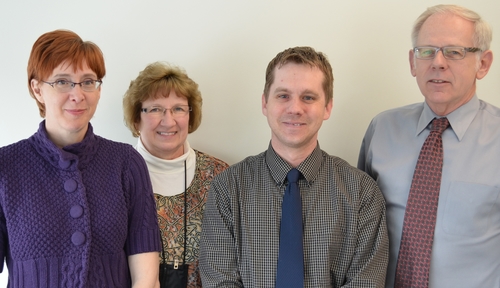With approximately 30 laboratories, the Eppley Cancer Center needs a lot of supplies.
So when it went live on the e-Shop system May 1 of last year, the prospect could have seemed daunting.
Instead, the Center, under business director Ed Ramspott, has become an example of how e-shops can save time, save money and create new efficiencies for a department.
Debi Griffith became Eppley’s “super user,” training on the system exclusively for the first two weeks after it went live. Griffith, an accounting technician, worked with her supervisor Penny Olson to devise an ordering system that made the most sense.
|
|
First, the department chose a “shopper” for each lab. These included PIs, lab personnel and support staff. This reduced redundant ordering, saved on shipping costs and eliminated paper handling for the labs and administration.
Griffith began giving “mini” training sessions, to no more than three to five people each.
“The beauty is in the training process,” Olson said.
About twice a week for six months Griffith trained “shoppers” – people who could access the system to select items and to become “requestors” – people who review and submit the orders.
“So we didn’t give access to everybody immediately,” she said. “Those that did have access were told, to go in and look around – but don’t try ordering until after training.”
Ramspott set the thresholds for approval by dollar limits. The Accounting Group approves each order according to these established thresholds. The system has saved manual labor as well as material cost, Olson said.
“There are certain expenditures I’ll want to see, but for routine research ordering regular use, this is more streamlined and allows us to operate better,” Ramspott said.
In the year before the system was implemented, Eppley had more than 7,000 purchase orders, which were either handwritten or typed. Then they were delivered to Griffith, who would enter the order – effectively doubling the process.
E-Shop cut that work in half.
“The researchers are here to do research,” Ramspott said. “We try to take up as little of their time as possible.”
Defining roles – shopper, requestor and approver – is important to maximize the impact of the system.
“Any department can implement this process,” Griffiths said. “But you will eliminate of a lot of confusion if you take the time to define your roles, train, and be patient with the shoppers as they begin to use this new system.”

These are great people with a wealth of knowledge between them; I plan on tapping into this resource regularly! Thanks to all of you!